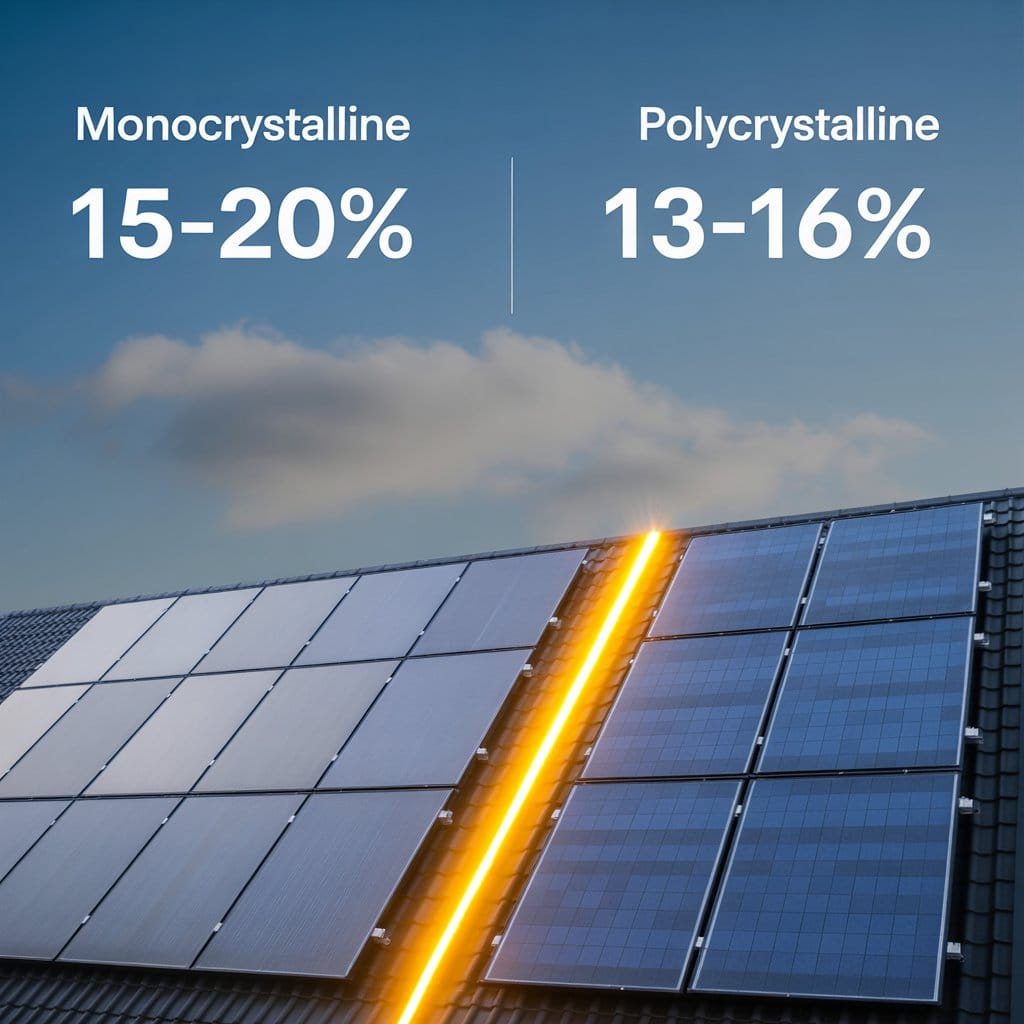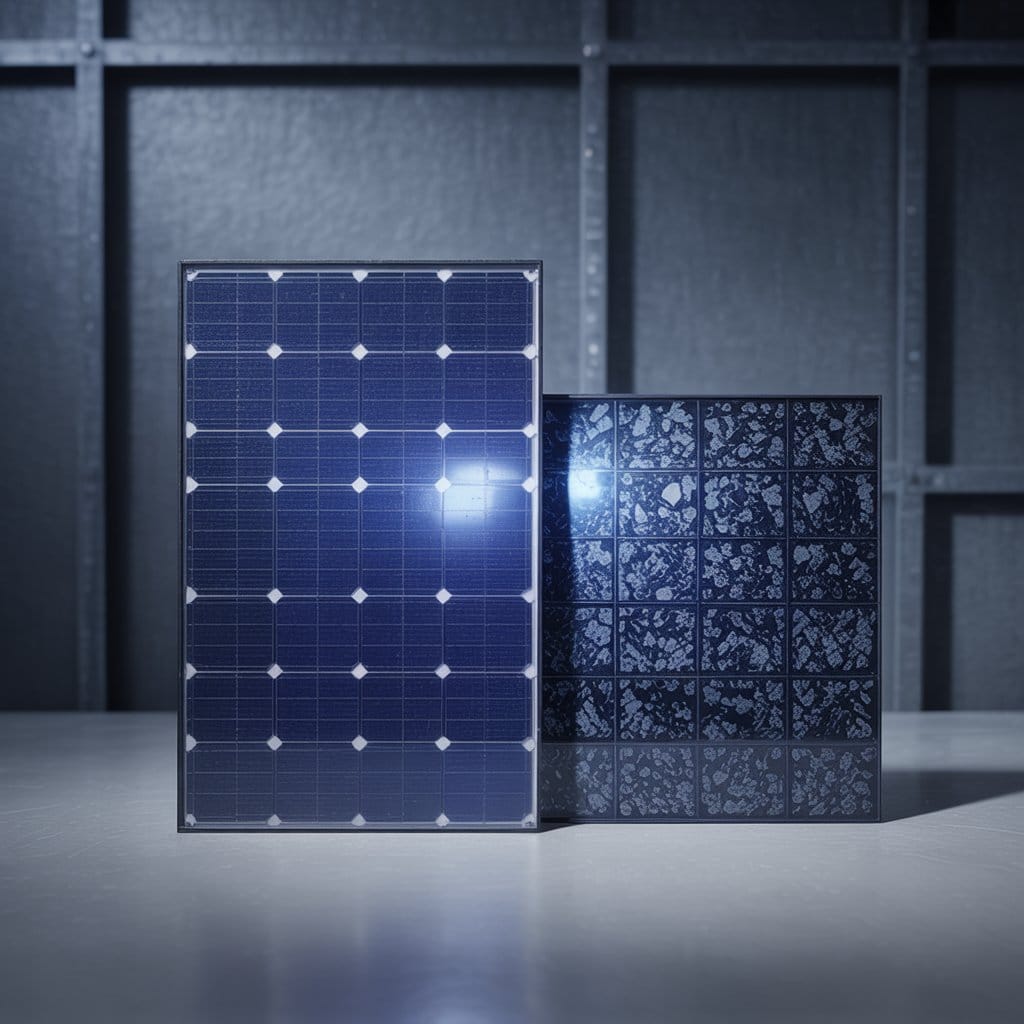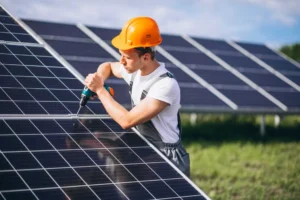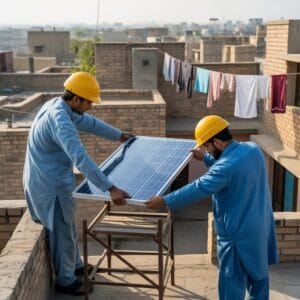As Pakistan embraces solar energy to tackle its energy needs and environmental challenges, homeowners face a crucial decision: which solar panel technology to choose? While both monocrystalline and polycrystalline panels are being installed by companies, understanding their differences is key to picking the right option for your needs and the unique Pakistani climate.

The Crystal Structure
Imagine slicing a silicon crystal – the sun-absorbing material in solar panels. Monocrystalline panels use single, pure silicon crystals, leading to a uniform, dark blue appearance. Polycrystalline panels, on the other hand, use multiple silicon fragments, resulting in a slightly less efficient structure with a speckled blue hue.

Efficiency under the Scorching Sun
Pakistan’s hot climate throws full heat at solar panels. Monocrystalline panels shine here, boasting slightly higher efficiency (15-20%) compared to polycrystalline panels (13-16%). This means they require less space to generate the same amount of electricity, a valuable consideration on limited rooftops. However, this benefit comes at a higher cost per watt due to the complex manufacturing process.
Dust Affects Solar Performance
The dusty air in Pakistan pose another challenge. Polycrystalline panels have a slight edge here, thanks to their slightly rougher surface, which sheds dust more readily. Monocrystalline panels, with their smoother surface, might require more frequent cleaning, especially in dusty regions.
Durability and Longevity
Both panel types boast impressive lifespans before their efficiency drops (25-30 years). However, monocrystalline panels tend to degrade slower in hot environments, potentially offering an edge in the long run. Ultimately, both options provide durable solutions for harnessing the sun’s power.
The Price Equation
Cost is a major factor for most homeowners. Polycrystalline panels generally win the affordability race, being about 10-15% cheaper per watt. However, remember that efficiency translates to space savings, potentially minimizing the number of panels needed for your electricity requirements. This can help offset the initial price difference.
Better Choice for Pakistani House
Ultimately, the “best” choice depends on your priorities and circumstances. If maximizing efficiency and space utilization are your top concerns, and your budget allows, monocrystalline panels might be the way to go. If affordability is a key driver, and you plan to regularly clean your panels, polycrystalline can be a good option. Remember, consulting a qualified solar installer who understands your specific needs and Pakistan’s unique climate is crucial for making an informed decision.
Further Guide
While this article highlighted the key differences between monocrystalline and polycrystalline panels, remember that newer technologies like PERC (Passivated Emitter Rear Cell) are pushing efficiency boundaries. Exploring these options with your installer might be worthwhile, depending on your budget and future-proofing goals.
Harnessing the sun’s power is a wise investment for Pakistani homeowners, offering energy independence and environmental benefits. By understanding the nuances of different panel technologies and carefully considering your priorities, you can choose the perfect sunshine harvester for your unique needs and contribute to a brighter, more sustainable future for Pakistan.


